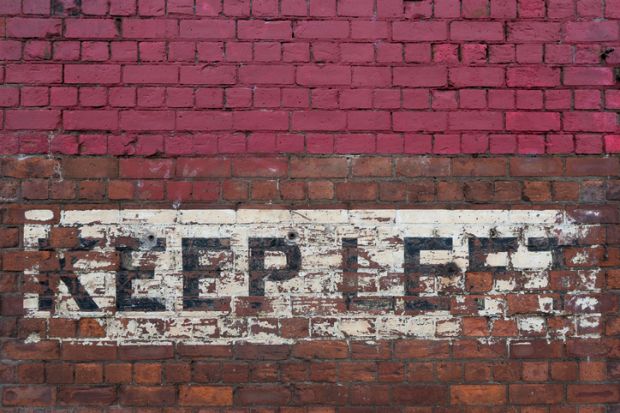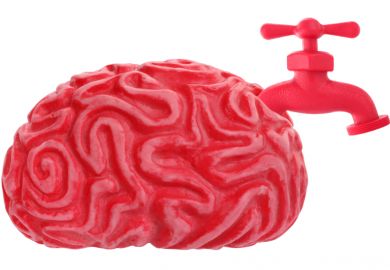Education played a big part in last year’s biggest news events: the election of Donald Trump, and the UK’s vote to exit the European Union.
Take the US presidential election. In breakdowns of exit poll data, degree holders favoured Hillary Clinton (Trump’s Democratic rival) by a margin of 9 per cent, while those with “some college education or less” favoured Trump by 8 per cent. Although this differential isn’t as great as differences between black and white voters (or between men and women), it was the differential that had grown most starkly between elections. Furthermore, it echoes precisely the trend found after the UK’s EU referendum: areas with a lower percentage of degree holders usually had a higher vote in favour of leaving the EU.
In an article in the Washington Post, Charles Camosy of Fordham University argued that a reason the Trump win came as such a public shock was that universities, which produce most of society’s opinion leaders, have become too homogenous in political viewpoint, contributing to wider social divisions. Camosy states that there are “norms, values, first principles, intuitions and stories which have been traditionally underrepresented in higher education”, characteristically those to the right of the consensus within academia.
I found myself daydreaming about this article and some follow-up interviews with Camosy when preparing readings for a new course, in which students are introduced to evidence around social inequalities, their magnitude, their causes and their effects.
I find one element of Camosy’s critique really challenging. He conjures the powerful image of a student sitting in class listening to a lecturer describe, or seemingly espouse, standpoints directly contrary to that of their family or friends back home, leaving them feeling preached to, and that anything they might say that is to the right of a certain line is unacceptable comment.
This doesn’t have to take the form of outright and abrupt censorship. Students notice their lecturer nodding when their classmates are being praised for talking about inequalities being perpetuated through unfair school systems that reward the privileged, or through failure to invest in infrastructure and resulting segregation. Just so, they notice the lecturer biting their lip when a classmate raises a contrarian question: “What about people who would prefer to receive welfare than to work?”
This narrowing of acceptable discourse does happen among academics. Endorsing any university decision on the grounds that it makes good accounting sense can be met with a cascade of tuts and muffled references to “neoliberal thinking”. And while that label is used freely and pejoratively, Friedrich Hayek, Milton Friedman and other contributors to the market-oriented view of the social world are often left off students’ reading lists, along with books such as Charles Murray and Richard Herrnstein’s The Bell Curve, which underpin much of the analysis from Trump’s allies in the “alt-right”.
Meanwhile, the views that students keep from the classroom remain unvented, unchallenged and underexplored.
It may seem a non sequitur to look at the university classroom as a problem site when it was graduates who more often voted for the candidate who, by any objective analysis, displayed a greater handle on objective realities in her campaign. However, I see a few reasons that we in higher education should take this critique seriously.
First, as discussed, it is not just the outcome itself but lack of public readiness for these democratic decisions that prompts critical reflection of how susceptible we all are to bias and to denial. Furthermore, any societal division that is widening should be taken seriously.
A characteristic of the polarisation of politics is a breakdown of empathy between those drawn to either pole. Camosy’s argument casts the university as failing to help its students to empathise with people whose experiences differ from theirs, and whose worldviews differ from their lecturers’. This charge should be a real concern for any public institution.
Additionally, like our colleagues in primary and secondary education, higher level educators will have to grapple with how to present ongoing developments and explain how they have come about. Will it be a case of “teaching the controversy”, and what issues does that throw up for how educators keep their biases from affecting students’ learning?
Perhaps there is an argument that the immediate educational imperatives lie elsewhere. When truth itself is under threat, as it is in the new era of “alternative facts”, surely this is a call to action for the university; a call to refamiliarise student with ideas of rigour and the necessity of evidence. But, to return to Camosy, our students should emerge from university as more than efficient fact-checkers, but aware also of greater truths and of the many truths that exist for their fellow citizens.
If Trump and Brexit are to be a call to action for us in higher education, we should be clear on what we are agitating for: a world that agrees with our viewpoints, or a world in which truth is still a virtue and where decisions are guided its value.
John Moriarty is a researcher in the School of Social Sciences, Education and Social Work at Queen’s University Belfast.
Register to continue
Why register?
- Registration is free and only takes a moment
- Once registered, you can read 3 articles a month
- Sign up for our newsletter
Subscribe
Or subscribe for unlimited access to:
- Unlimited access to news, views, insights & reviews
- Digital editions
- Digital access to THE’s university and college rankings analysis
Already registered or a current subscriber?









